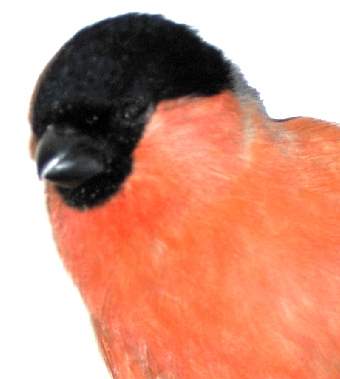
Picture of Bullfinch
|
The Eurasian Bullfinch is a beautiful little bird,
around 15 centimeters in length. The varied plumage of the cock-his
bright red breast and his grey back, set off by his coal-black head and
quills-is naturally attractive; while the facility with which he is tamed,
and his engaging disposition in confinement, made him a popular cage-bird
in Victorian England, to say nothing of the fact (which, in the opinion
of so many at that time, added to his charms) of his readily learning to
"pipe" a tune, or some bars of one, though this perversion of his natural
notes is hardly agreeable to the ornithologist. By gardeners the Bullfinch
has long been regarded as a deadly enemy, from its undoubted destruction
of the buds of fruit-trees in spring-time, though whether the destruction
is really so much of a detriment is by no means certain.
Bullfinches in Northern and Eastern Europe are
often larger, with more vivid tints than those who are common in the UK
and Western Europe. A type of bullfinch which does not appear to be separated
as an individual species in some classification structures (where it is
considered to be a type of Eurasian Bullfinch), but is described by others
as a very distinct species, the Azores bullfinch (Pyrrhula
murina), is remarkable for its dull coloration. As its name suggests,
this bullfinch is peculiar to the Azores.
|





